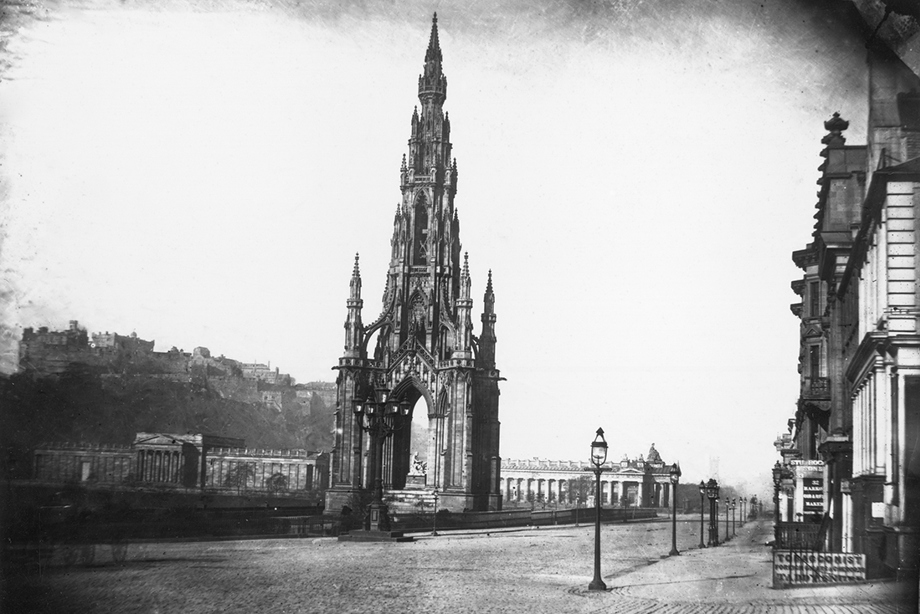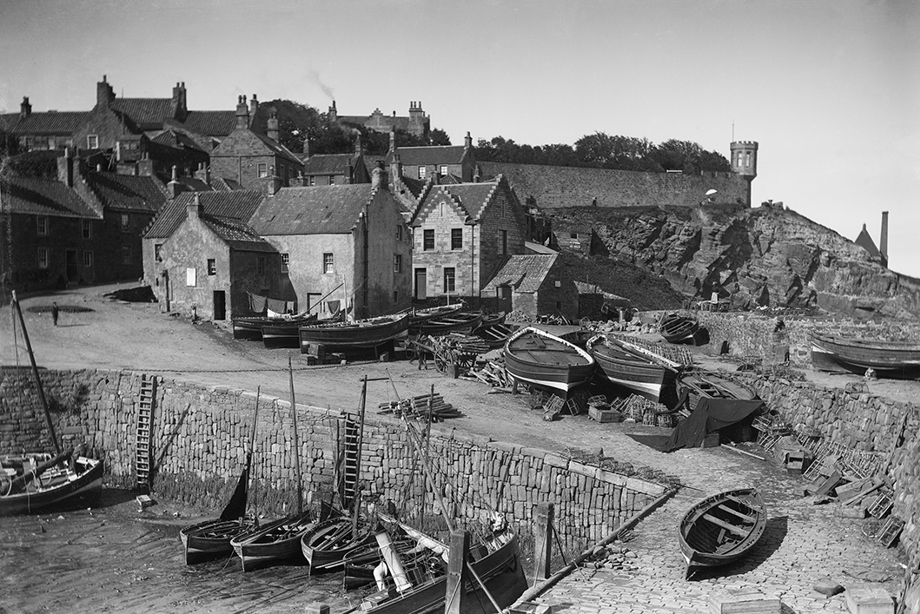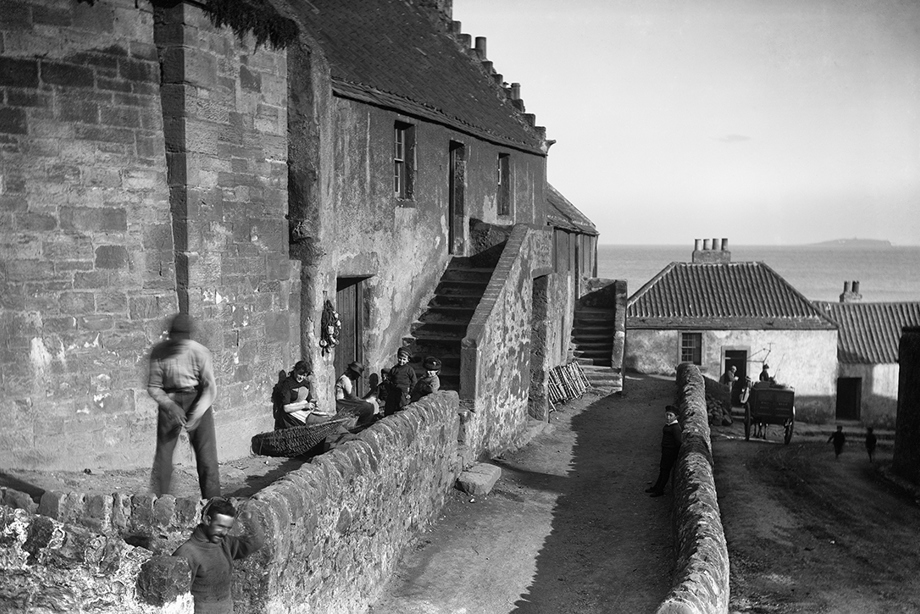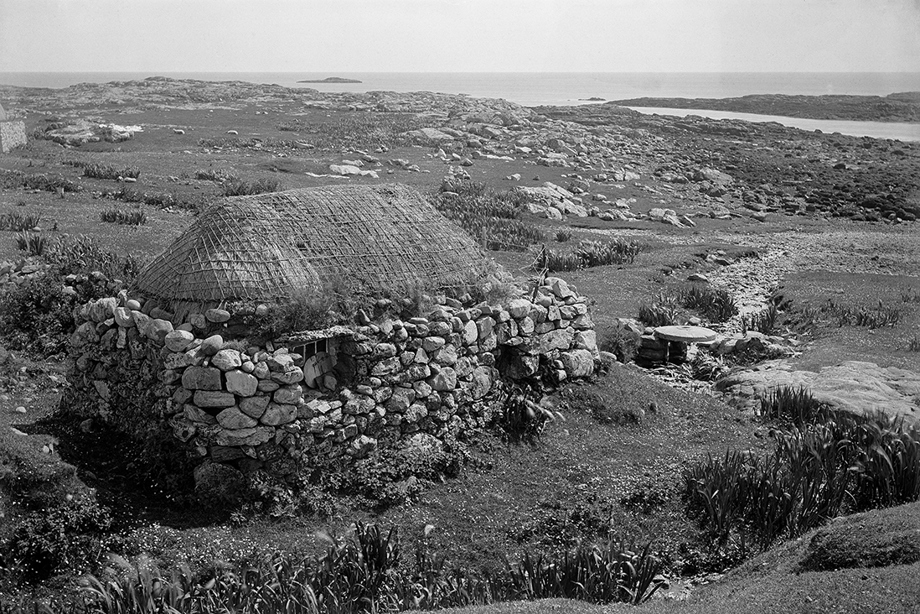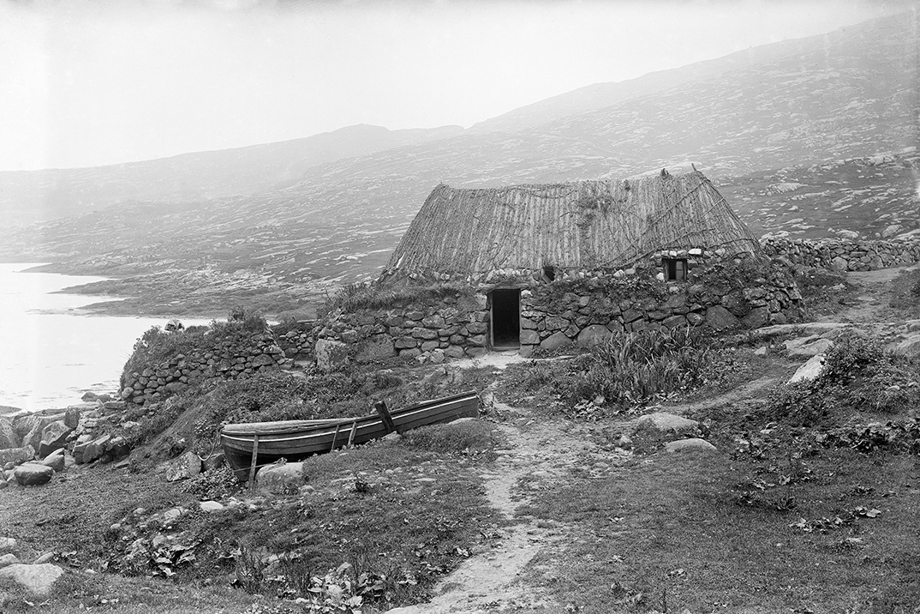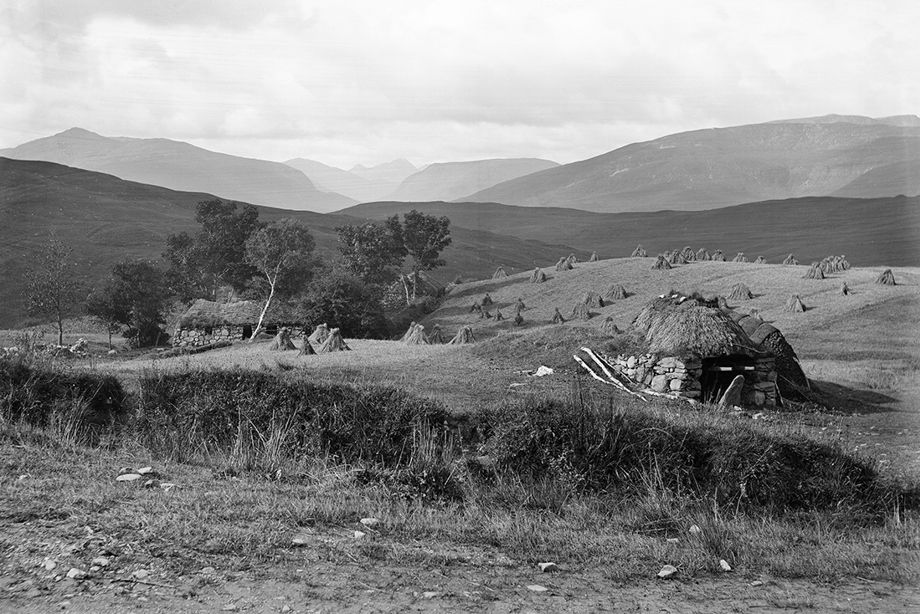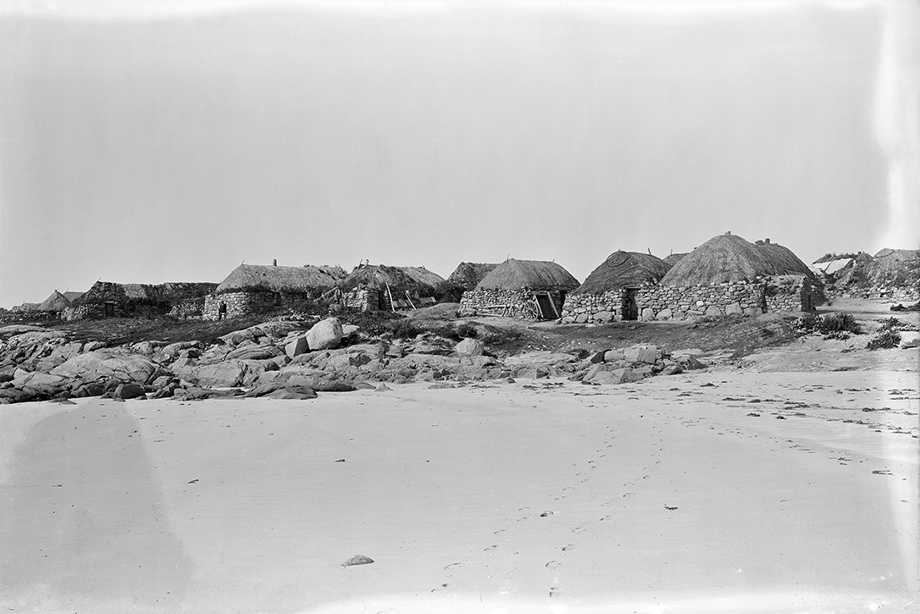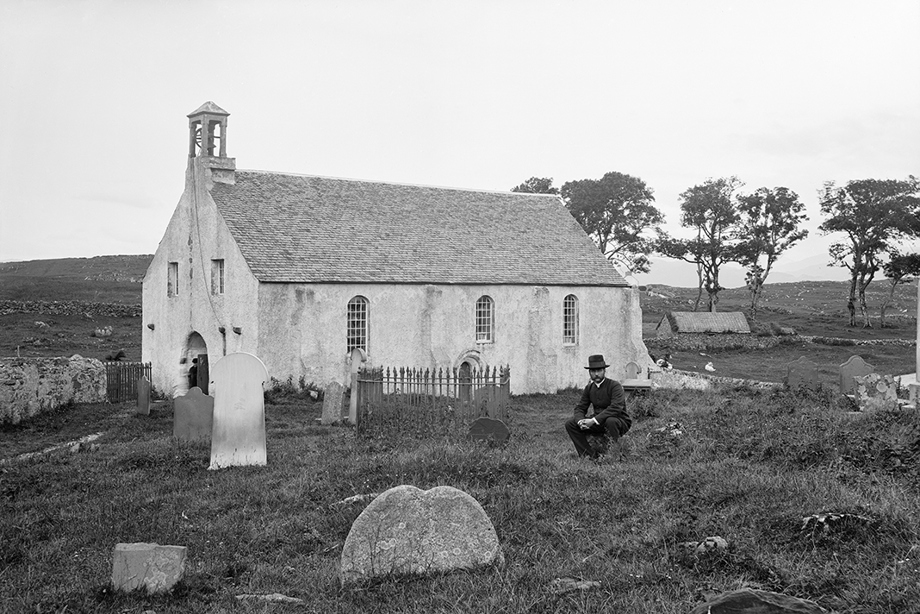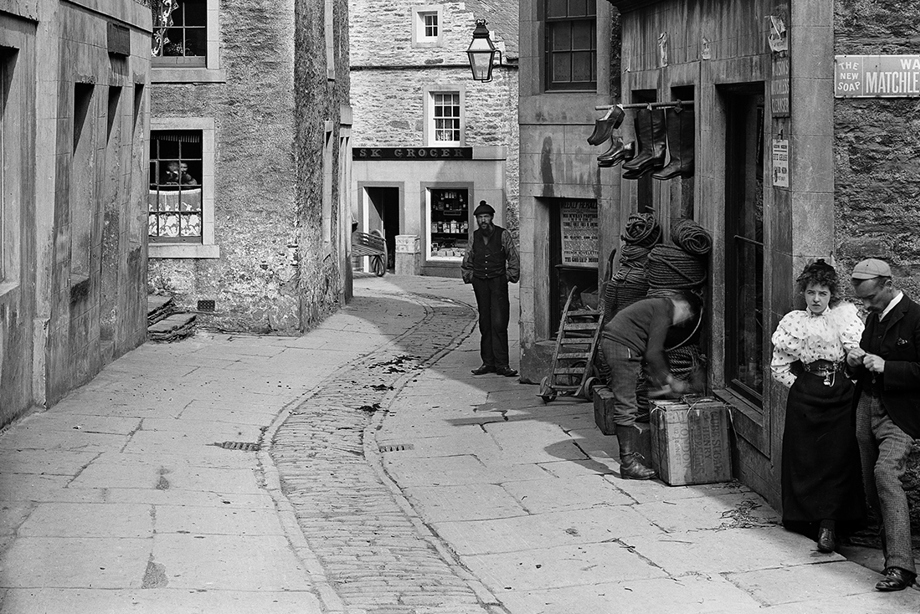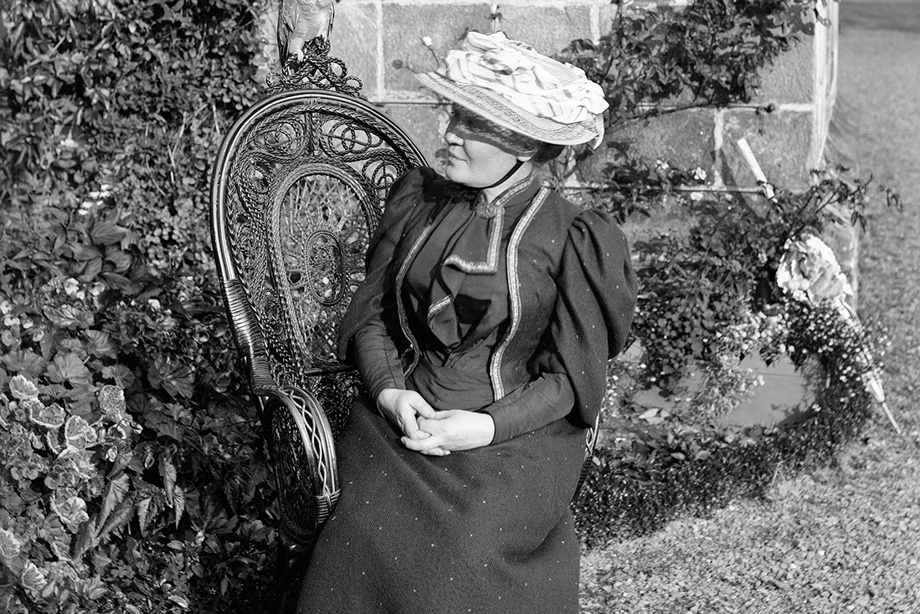We can guess from his activities and photographic subjects that Beveridge was actively trying to capture a certain way of life that was disappearing after Scotland’s industrial revolution.
Ways of life can also be described as ‘Intangible Cultural Heritage’ which includes aspects of culture that have shaped our understanding of ourselves throughout our history. They can inform how we see our place in the world, our relationships with each other, and the places in which we live.
It is difficult to record Intangible Cultural Heritage comprehensively, as it is either constantly evolving or fading from everyday life. What current ways of life would you record for the future and how would you capture them?
Scott Monument and Princes Street View, Edinburgh
This is one of very few photographs of Edinburgh taken by Beveridge. While studying at university in 1867 he became a member of the Edinburgh Photographic Society, which seems to mark the beginning of his interest in photography.
The quality of this image is quite different to his later photographs, much grainer and high contrast, as is his choice of subject. It betrays a more urban Scotland that was thriving, in the same period Beveridge sought to showcase the romantic rural idylls and ways of life he feared might disappear.
Shoregate and Harbour, Crail, Fife
Beveridge was especially interested in the harbour town of Crail, taking many photographs of its harbour, streets, graveyards and local residents. He was also interested in capturing the lively but declining industries of that time.
The town was a major fishing port from the 16th century but declined in the late 19th century when the herring changed its pattern of migration in the North Sea. The town's fishing industry was slow to recover, even after the herring returned to the Firth of Forth in the 1830s.
Houses in Shoregate, Crail, Fife
In this dynamic photograph Beveridge manages to capture a scene from everyday life in Crail, focusing on a fishing family working and resting in the sun outside their house.
As the herring industry declined in the late 19th century, the local residents were forced to find other ways to make a living. In this shot we can see lobster pots, with many of the fisherfolk turning to catching lobsters instead.
Mill with millstone being re-used as stepping stone, Tiree, Outer Hebrides
Beveridge had a deep interest in documenting what he saw as picturesque Scottish rural life, particularly the old crofting blackhouses and cottages spread across the highlands and islands.
The remains of this corn-mill in the 19th-century crofting community of Caoles, Tiree, was photographed by Beveridge around 1899. Still in operation until 1885, we can see that the old mill stone was now in use as a bridge when Beveridge visited.
Blackhouses in Kentangaval, Barra, Outer Hebrides
In 1883 the village of Kentangaval, Barra, was reportedly home to twenty crofters and twenty-four cottar families (cottars were farm labourers occupying a cottage and small holding of land in return for services).
While we cannot be sure how many still occupied the village when Beveridge visited, we can see from his photograph that the blackhouses and fishing boats are still well kept. Fishing was known to be the main industry on the island at that time, allowing residents to earn a decent income.
Farmstead, Glen Scaddle, Argyll & Bute
Glen Scaddle is an isolated mountain valley in the Ardgour peninsula, where Beveridge captured this farmstead during a harvest, depicting how the sheaves of straw were arranged into groups (stooks), and stood on end to dry.
As with much of his rural photography, Beveridge used skillful composition to include the landscape surrounding buildings rather than focusing solely on the buildings themselves. This added context creates atmosphere, beauty and helps tell a story of the place.
Hougharry, North Uist, Outer Hebrides
Hougharry, was another a crofting township of traditional island blackhouses, found on the edge of a wide sandy bay in North Uist. Beveridge captured this in 1904 providing a unique photographic record of a style of architecture unique to the Hebrides.
These houses, dating from the early 19th century, are squat, thatched buildings with low rounded walls, constructed of local stones and boulders held together without mortar.
St Moluag's Cathedral, Lismore, Inner Hebrides
Beveridge photographed this church, thought to be the most significant building in Lismore, when he visited in 1882. There are a number of photographs in our collection of this building with the behatted man and other parish members in various poses, with Beveridge striving to find the best composition.
We might guess that Beveridge felt the parish members were as important as the building itself and should be documented to add to its story.
Dundas Street, Stromness, Orkney
The mid-19th century houses captured in this shot of a narrow street in Stromness, Orkney, are in a distinctive Orkney style with flagstone walls and crowstepped gables fronting the street. In this case, the architecture of Dundas street hasn’t changed a great deal in the present day, but the people pictured allow us an insight into the everyday life of a Scottish island town in the late 1800s.
Photograph of woman sitting outside Culross Abbey House, Fife
Beveridge didn’t often take portraits, even of his own family. This rare photograph of a well dressed female is thought to be his older step sister. The original envelope it was discovered in was annotated by Beveridge with 'Sarah & Jacko Culross Abbey'.
Looking closely we can see that Jacko appears to be sitting on the back of Sarah’s chair.
Continue the exhibition
Find out more about Relics, Ruins and Ways of Life.

